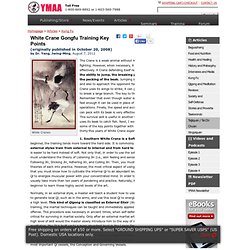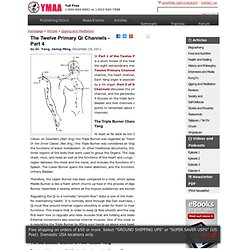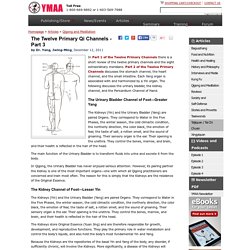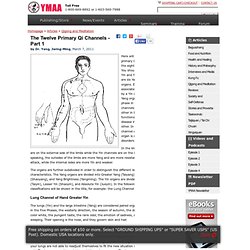

#55 Balance Concepts for Combat Supremacy - Survival Self-defense: Close Combat, ground, gun and free fighting. By Lt Col Al "In all forms of strategy, it is necessary to maintain the combat stance in everyday life and to make your everyday stance your combat stance...whether you move fast or slow, with large or small steps, your feet must always move as in normal walking...

" - Miyamoto Musashi, The Book of Five Rings In his newsletter, Power is Worthless if You Have No Balance, Guided Chaos founder Perkins offers the following: It is possible to be effective in KCD without being particularly strong. An interview with Wang Xiangzhai. Video Tutorials. White Crane Gongfu Training Key Points. The Crane is a weak animal without much strength to use in fighting.

However, when necessary, it can defend itself very effectively. A Crane defending itself relies on only three things: the ability to jump, the breaking power of its wings, and the pecking of the beak. Jumping is used to dodge an attack and also to approach the opponent for its own attack. When a Crane uses its wings to strike, it can generate enough power to break a large branch. The key to this kind of power is speed. 1. Normally, in an external style, a master will teach a student how to use the concentrated mind to generate local Qi, such as in the arms, and use this local Qi to energize the muscular power to a high level. Finally, Grand Circulation (Da Zhou Tian) is taught to the student. Therefore, when a high level White Crane practitioner manifests Jin in his practice or in battle, the physical body is very soft at the beginning while the Qi is led to the limbs to energize the muscles for action.
The Twelve Primary Qi Channels - Part 4. In Part 1 of the Twelve Primary Channels there is a short review of the twelve primary channels and the eight extraordinary meridians.

Part 2 of the Twelve Primary Channels discusses the stomach channel, the heart channel, and the small intestine. Each Yang organ is associated with and harmonized by a Yin organ. Part 3 of the Twelve Primary Channels discusses the urinary bladder, the kidney channel, and the pericardium channel of hand. The Twelve Primary Qi Channels - Part 3. In Part 1 of the Twelve Primary Channels there is a short review of the twelve primary channels and the eight extraordinary meridians.

Part 2 of the Twelve Primary Channels discusses the stomach channel, the heart channel, and the small intestine. Each Yang organ is associated with and harmonized by a Yin organ. The following discusses the urinary bladder, the kidney channel, and the Pericardium Channel of Hand. The Urinary Bladder Channel of Foot—Greater Yang The Kidneys (Yin) and the Urinary Bladder (Yang) are paired Organs. The main function of the Urinary Bladder is to transform fluids into urine and excrete it from the body. In Qigong, the Urinary Bladder has never enjoyed serious attention.
The Kidney Channel of Foot—Lesser Yin The Kidneys store Original Essence (Yuan Jing) and are therefore responsible for growth, development, and reproductive functions. Deficient Kidney Yang symptoms are significantly associated with loss of energy or warmth. The Twelve Primary Qi Channels - Part 2. In Part 1 of the Twelve Primary Channels there is a short review of the twelve primary channels and the eight extraordinary meridians.

You should know that in our body, there are six Yang organs and six Yin organs. Each Yang organ is associated with and harmonized by a Yin organ. Paired Yin and Yang organs belong to the same phase in the Five Phases. Their channels are sequential to each other in the circulation of Qi, their functions are closely related, and disease in one usually affects the other. The Twelve Primary Qi Channels - Part 1. Here will briefly review the twelve primary Qi channels along with the eight extraordinary meridians.

You should also know the organ's Yin and Yang. In our body, there are six Yang organs and six Yin organs. Each Yang organ is associated with and harmonized by a Yin organ. Paired Yin and Yang organs belong to the same phase in the Five Phases. Magazine.